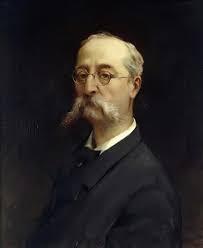

Paul Desire Trouillebert
FR
135
Artworks
1829 - 1900
Lifespan
Artist Biography
Paul Désiré Trouillebert (1829 – 28 June 1900) was a distinguished French painter associated with the Barbizon School, whose multifaceted career spanned portraiture, genre scenes, landscapes, still-lifes, and Orientalist themes. Born in Paris, Trouillebert embarked on his artistic journey under the tutelage of Ernest Hébert and Charles Jalabert, both respected academicians. While his teachers instilled in him a polished academic style, Trouillebert's artistic inclinations would eventually lead him towards a more expressive and individual path, particularly in his celebrated landscapes that echoed, yet remained distinct from, the work of Jean-Baptiste-Camille Corot.
Trouillebert made his official entry into the Parisian art world with his debut at the Salon of 1865, where he exhibited 'Portrait de Mlle A…'. For several years, from 1865 to 1872, portraits remained his primary submissions to the prestigious Salon, a strategic choice as this genre was generally well-received and less likely to challenge conservative tastes. However, during the 1860s, his artistic focus began to pivot decisively towards landscape painting. This shift culminated in the exhibition of 'Au Bois Rossignolet' at the Salon of 1869, a landscape that garnered critical acclaim and marked his growing commitment to capturing the nuances of nature. Influenced by Corot and the Barbizon tradition, he embraced painting *en plein-air*, immersing himself in the direct observation of the French countryside, particularly its riverscapes and wooded scenes, often imbued with a soft, lyrical quality.
The comparison to Corot became a defining, and at times complex, aspect of Trouillebert's career. His landscapes bore such a striking resemblance to Corot's later manner that they were sometimes mistaken for the elder master's work. This similarity led to a notorious incident where one of Trouillebert's paintings, with a forged Corot signature, was sold to Alexandre Dumas's son. The subsequent lawsuit, while highlighting the issue of forgery, also brought Trouillebert an unintended measure of fame. Critics of the time were occasionally harsh, with some dismissing his work as mere imitation. However, while the influence of Corot is undeniable, Trouillebert's landscapes possess their own distinct character, tonality, and a sensitive handling of light that set them apart.
Despite the strong association with landscape painting and the Corot comparisons, Trouillebert never confined himself to a single genre. He was a versatile artist, demonstrating considerable skill in portraiture throughout his career, as well as in still-lifes and depictions of the nude. His foray into Orientalist themes produced notable works like 'Servante du harem' (The Harem Servant Girl) and 'L’Orientale,' showcasing his ability to adapt his style to diverse subject matter. His painting of nudes, 'Les Baigneuses' (The Bathers), was particularly well-received at the Paris Salon of 1884, the year he last exhibited there with 'La Gardeuse d’Oies' (The Geese Keeper). He traveled extensively through French regions like Brittany, Sarthe, and along the Loire and Seine, often painting from his workshop-boat, capturing scenes of fishermen and tranquil riverbanks.
Trouillebert's style is characterized by a light, almost vaporous touch, and a masterful ability to render the subtle effects of light on the landscape, particularly at dawn or dusk. His loosely painted landscapes, with their focus on atmospheric conditions like light and rain, are seen by some as prefiguring aspects of the Impressionist movement. Contemporary critics praised his ability to reproduce nature with a 'poetic touch that gives an impression of a rare truth.' Édouard-Joseph, in his 'Dictionnaire Biographique des Artistes Contemporains,' lauded Trouillebert as 'a complete painter,' highlighting his skill across genres and asserting that his considerable oeuvre 'conserves a tonality that is its own, an incontestable originality and a strong personality which differentiates it from Corot.' His works are held in numerous prestigious museum collections worldwide, including the Musée d'Orsay, the Metropolitan Museum of Art, and the Hermitage Museum.
Paul Désiré Trouillebert passed away in Paris on June 28, 1900. While his name was often linked to Corot, sometimes to his detriment, his legacy endures as that of a talented and versatile artist who made significant contributions to 19th-century French art. He successfully continued the traditions of the Barbizon School while also exploring new avenues of expression that hinted at the evolving artistic landscape. More than just a follower of Corot, Trouillebert was an artist of considerable originality, whose diverse body of work merits appreciation for its intrinsic quality and distinctive vision.